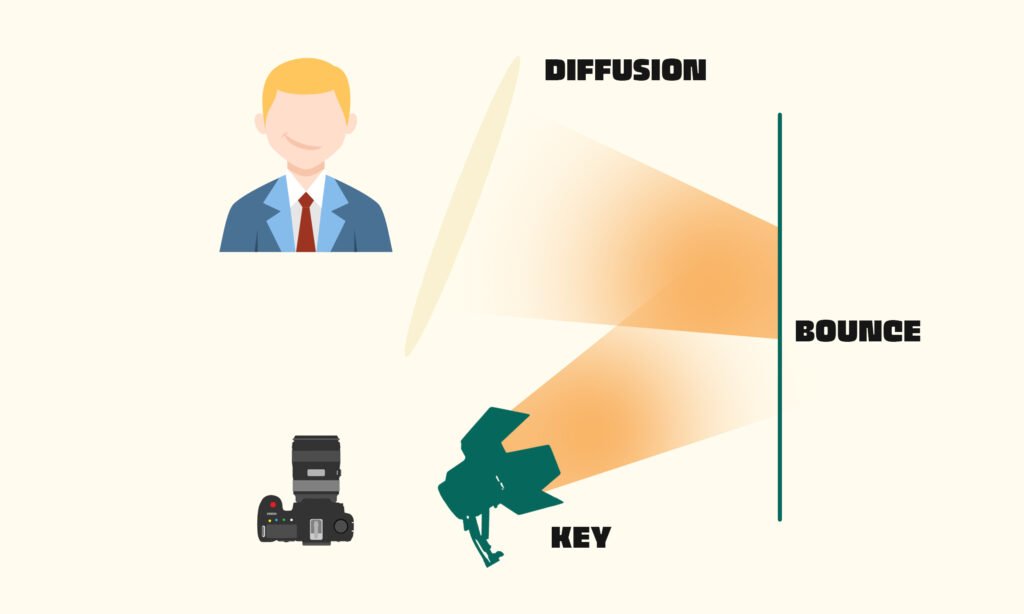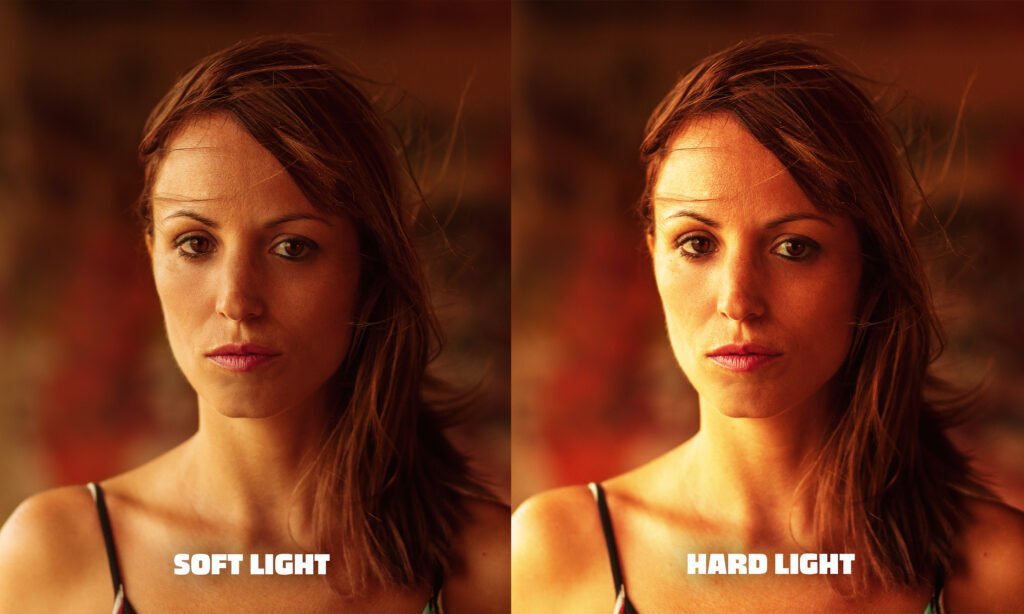
Choosing the right type of lighting in video production is vital. It is because film or video lighting is an aspect that makes or breaks the quality of a film or a video. The type of film lighting can differ according to your requirement. For instance, the effects and lighting arrangement you require for an advertisement will differ from the effects and lighting arrangement you might want in creating a corporate promotional video.
How would you know the type of lighting that is adequate for your film or video? Of course, there is a variety of lighting types for you to choose from. This blog will be a beginner’s guide to film lighting and will help you to get an idea about the basic types of film or video lighting that will be essential in video production.
What Is Film Lighting?

Film lighting involves handling natural and artificial lighting that may appear in a scene of a film or a video. In other words, film lighting is all about the direction, quality, source, and color of lighting. All these elements work in coordination to control our attention, create texture or visual impact, and create an atmosphere.
The ‘direction’ of light means the path of the light source. It is essential to pay attention to the whereabouts of the light source. That means from where the source of light comes and where it lands is of crucial importance. The ‘quality’ of lighting involves the intensity of light such as hard light or soft light. The ‘source’ of lighting means the role of the lighting such as fill light and key light. Lastly, the ‘color’ of lighting means the color of lighting such as white light and warm light.
The ultimate purpose of film lighting is to create a surrounding that can look realistic on screen.
What Are The Types Of Film Lighting In Video Production?

The same type of lighting will not match every type of video that you are producing. For instance, if you want to do a documentary, some lighting types are particularly used in documentaries. Or else, if you are using drones in your video, you might use a different kind of lighting. Depending on the purpose of the video, your selection of lighting will change and now let’s look into some of the types of film lighting.
Natural Lighting

Natural lighting can be considered as the type of lighting that is difficult to work with as it keeps on changing from hour to hour. You cannot move natural lighting in the direction you want (sunlight). However, if you become successful in using natural lighting appropriately, having that realistic touch in your videos will not be challenging.
If you are hoping to use natural lighting in your videos, it is essential to pay attention to the location and the weather changes, and other environmental factors that are out of our control and manipulation. Using bounce cards or flags can help you to slightly manipulate the natural light sources and on the other hand, black flags can be used to completely block the natural light as well.
Key Lighting

The “primary light source” or the “main film light” are two other terms that can be used to identify key lights. In other words, the key light is the most intense and direct type of light that can be used in video production. Primary light sources are moved around to create different effects according to your requirements. For instance, if you place the key light behind an actor or a subject, a gloomier atmosphere can be achieved than placing it in front of the actor or subject.
To achieve key lighting, you do not need any specific type of lighting equipment. Key lighting can be achieved by anything such as an open-faced fixture or a lamp. What you have to mainly do is to make that light source the central source of light in your video shot.
An important fact to know about key lighting is to never place your key light source close to your camera because it can create shots that are flat and featureless.
Fill Lighting
Fill lighting refers to the type of lighting that is used to fill in and eliminate dark, gloomy, and shadowy areas that your key light creates. Usually, the light source that is used for fill lighting is placed in the opposite direction of the key light. Fill lighting is important in adding visual depth to your video.
In comparison to key lights, fill lights are weaker and softer. And that is why fill lights are used for creating a surrounding that can look natural and visually appealing as much as possible. In addition, placing your fill light closer to the camera can help you in minimizing gloomy and shadowy areas.
Backlighting
If you wish to create a three-dimensional scene, one of the lighting techniques that is used is backlighting. As the name suggests, a backlighting source is placed behind a subject or an actor. It is usually placed a little higher in height than the subject or the actor to separate your subject or actor from the background.
In instances when you use a backlight with a fill light source, you must diffuse the backlight. The purpose of this is to make the surrounding less intense and to cover a wider area of the subject or the actor.
Backlighting is one lighting element of a three-part light setup. However, if you wish to create a halo effect, a backlighting source can be used on its own. It is important to note that natural sunlight can be used as a backlight source. But, in such instances, Backlighting should be accompanied by a foam board or reflector to diffuse the sunlight.
Side Lighting
When you wish to highlight your scene from the side parallel to your subject or actor, a side lighting source is used. Side lighting is usually used on its own. However, there can be instances when a side lighting source is accompanied by a fill light to provide the shot with a dramatic mood or to provide “chiaroscuro” lighting. When a side light is used with fill light, it is important to reduce the intensity of the fill light down to 1/8 of that of the side light to achieve that dramatic feel in the scene.
Bounce Lighting

The reflection of light with the support of a foam board or a silk board, a wall, a ceiling, or any other reflective surface is referred to as bounce lighting. The intensity and the quality of lighting are entirely determined by the surface that you choose as the reflector. For instance, if you use a foam board as a reflector, soft and gentle lighting is achieved while a highly reflective material such as silver creates harsh lighting.
Bounce lighting is useful in spreading light evenly in a larger area and also it succeeds in highlighting the subject.
Practical Lighting (Ambient Lighting)

The lights that are present within the scene you are shooting are known as “practical lights”. The lighting that is emitted from props such as a TV, candle, lamp, and torch falls into the type of practical lighting. Practical lighting is also a type of lighting that is not easy to work with because it is unpredictable.
In cases where you want to alter the existing practical lights in the scene, diffusion gels, or dimmer switches can be used for this purpose. Moreover, practical lights such as candles are weak sources of lighting. Therefore, if you want to create a scene with candles, a fill light source can be incorporated to subtly accentuate your scene.
Soft Light
A type of lighting that is mostly used for promotional videos, romantic scenes, and interviews is soft lighting. Soft lighting is not a lighting direction, but one of the lighting techniques used in video production. Diffusion equipment or a large light fixture is used to create soft lighting in such kinds of scenes.
It is important to note that soft lighting works well on human subjects. The soft quality instilled in this lighting minimizes the appearance of shadows and is a perfect technique to be used for beautification purposes.
Hard Light
Hard light or specular light is used in instances when you want to create sharp and harsh shadows directly from a light source. Natural sunlight or intense light can be identified as a source of hard lighting.
Hard lighting is a type that is not widely used but it is indeed a great source of lighting that can be used to emphasize alterations in color, shape, and texture and also to draw the audience’s attention toward the main subject of the scene.

High-Key Lighting
The lighting technique that is used in the creation of a very bright scene that has zero shadows is “High-key Lighting”. Generally, it fills up an entire scene. This is a type of lighting that is used in a majority of videos and movies. Close-up cosmetic commercials, music videos, and sitcoms often use high-key lighting to achieve their requirements.
High-key lighting is usually produced from frontal lighting as it has a low lighting ratio. One thing you should be careful of when using high-key lighting is to refrain from overexposing certain areas in your scene.
Low-Key Lighting
The opposite of high-key lighting is low-key lighting. A scene with low-key lighting includes lots of shadows. In most instances, the scene will only include a strong key light source. To achieve a low-key lighting scene, a hard light source is used along with a high lighting ratio. In such scenes, fill light sources are not used.
This type of lighting is generally used to create suspense, mystery, cynicism, or a horror atmosphere in the scene. Moreover, low-key lighting is also used in creating moody scenes.
Motivated Lighting
Motivated lighting is used in instances when you want to replicate or brighten a natural light source such as moonlight or sunlight. This is a type of lighting that enhances practical light sources.
Filters and colored gels are used to maintain the authenticity of the motivated lights as much as possible. Filters are used to create window shadows and colored gels are used to imitate the lights from the sun and the moon.
The Beauty Of Film Lighting

From casting to writing to directing, video production encompasses a variety of elements that go into creating videos and films with useful content. This kind of creative content must be presented in high-quality visuals and such visuals can be obtained by using the right type of lighting in video production. No matter how good your content is, if you make the wrong choice of lighting, your attempt in creating a high-quality video would become futile.
FAQs
The traditional three-point lighting setup includes a key light, a fill light, and a backlight. Flat lighting is created if all these three lighting sources are equally bright. Usually, flat lighting is used in news broadcasting.
Lighting in a video or a film is integral in communicating the mood and atmosphere of the scene to the audience. Lighting is important in building character, especially in a movie. Whether it is a villain or a hero, simple alterations in lighting can make the audience feel the intensity of the characters in the shot.



